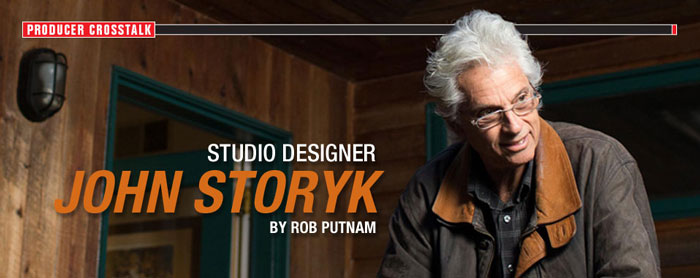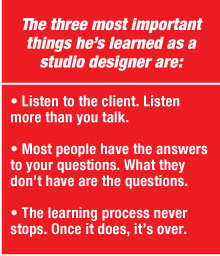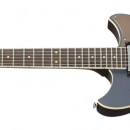
Studio architect and acoustician John Storyk made his mark in an extraordinary fashion: he was tapped by Jimi Hendrix and engineering legend Eddie Kramer (“Producer Crosstalk” 2006) to design Hendrix’s iconic Electric Lady Studios. He’s created over 3,500 studios, conference rooms and stadiums around the world. Walters-Storyk Design Group, headquartered in Highland, NY, maintains offices across the globe. In recent years Storyk has designed rooms including Buenos Aires’ Circo Beat Studios, Alicia Keys’ Oven Studios and Jay Z’s Roc the Mic.
Storyk studied architecture at Princeton and is a lifelong pianist. He got his start in studio design with New York hot spot Cerebrum. “They were looking for carpenters to work on an experimental nightclub,” the designer recalls. “I agreed to do the carpentry if they’d let me redesign the club, which I did. Jimi came in one night [and liked the sound]. When he later bought the Generation Club in Greenwich Village, I was brought in to design his new place. But at the 11th hour, Kramer talked him into doing Electric Lady instead.”
When Storyk embarks on a new project, he begins with programming—determining what a client’s needs are. “It may not look like I’m focusing on programming, but I am,” he explains. “I start the conversation by asking ‘What console do you want to use?’ The answer to that question immediately tells me a lot about the recording process and the size of an object that will go in the room. Sooner or later I’ll ask ‘How loud do you monitor?’ Maybe they don’t have a number. Sometimes we have to go to a session and measure. I’ll ask them to turn it up as loud as they work.
“Most people focus on equipment first,” he continues. “I’ll get a list of a client’s gear all the way down to the plug-ins. I ask how many musicians they want in the room. How many square feet the room should be, what kind of volume and reverb time they want: this is information we need to make great rooms. We have to yank that out of people.”
Sound isolation can easily be overlooked. “Most money in studios is dedicated to isolation,” Storyk asserts. “Understanding how much you need—how quiet your rooms need to be––is huge. People usually have no idea [how much they want]. They commonly say ‘We’re not gonna play that loud.’ That’s like saying you’re only going to be half pregnant.”
Cost is always a consideration. In these efficient times there’s much for prospective studio owners to smile about, as Storyk explains. “The good news is that studios have gotten smaller and more affordable, as has the equipment. The world of prefabricated acoustic materials has also exploded. There’s garbage on the market, but there’s good that didn’t exist 10 years ago, too. We’ve got great measuring equipment now. Time domain and first-order reflection issues used to be hard to measure. Now they can be determined with iPhones. And we’ve got interesting prediction software. In many instances we can hear rooms before they’re built.”
Storyk has no plans to retire. Slowing down is merely a consideration. Walters-Storyk Design Group is staffed half by architects, half by audio professionals, and every design is unique. Occasionally clients ask for a copy of an earlier studio plan, a request which the designer consistently turns down. Currently he has at least two major projects on the horizon, both secret but one definitely involves Kramer.
Contact John Storyk - Walters-Storyk Design Group.
By Rob Putnam










